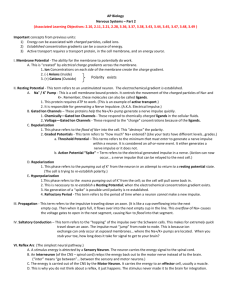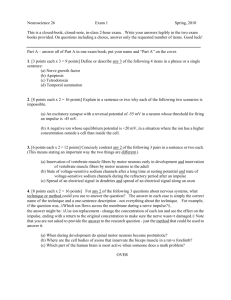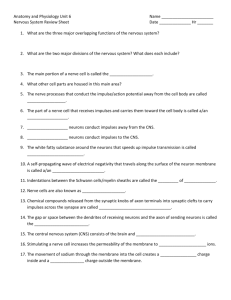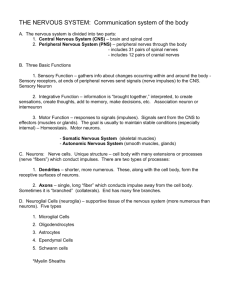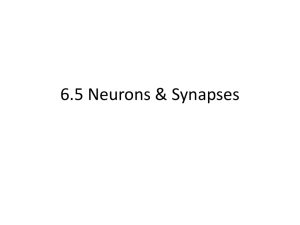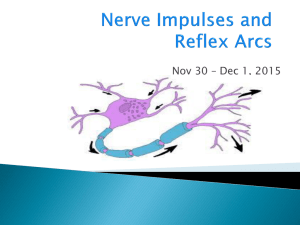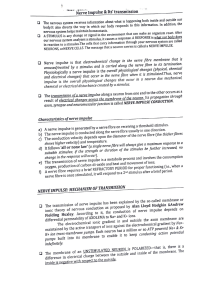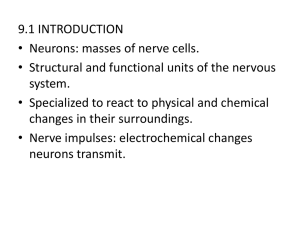Nerve Impulses and Reflexes Guided Notes
advertisement
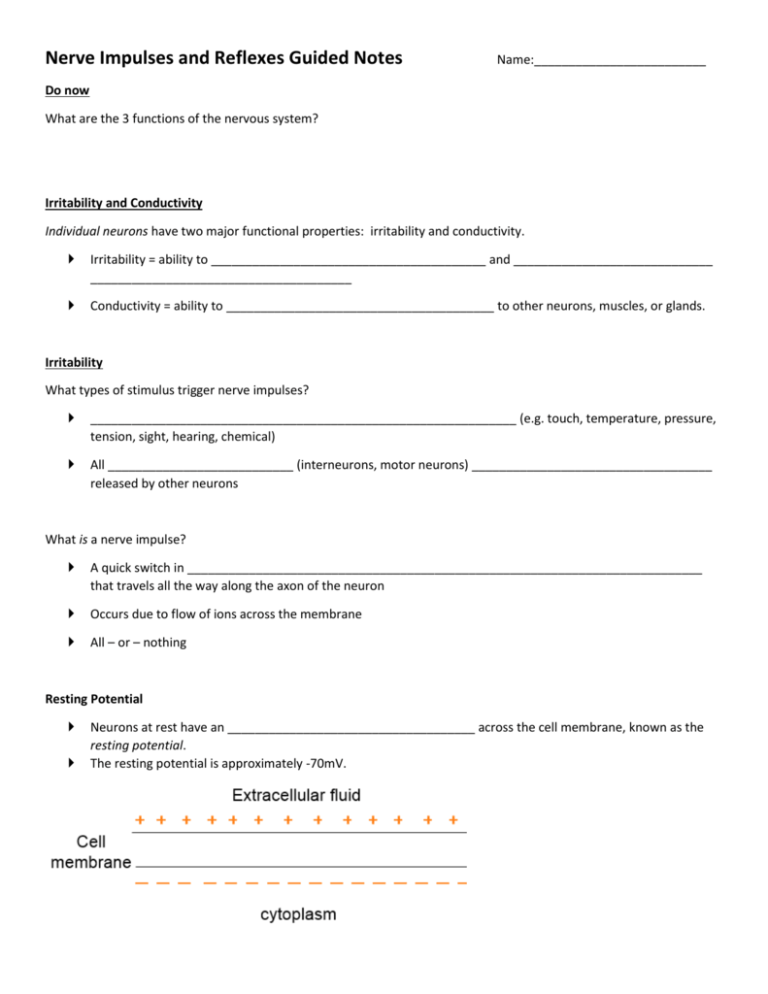
Nerve Impulses and Reflexes Guided Notes Name:_________________________ Do now What are the 3 functions of the nervous system? Irritability and Conductivity Individual neurons have two major functional properties: irritability and conductivity. Irritability = ability to ________________________________________ and _____________________________ ______________________________________ Conductivity = ability to _______________________________________ to other neurons, muscles, or glands. Irritability What types of stimulus trigger nerve impulses? ______________________________________________________________ (e.g. touch, temperature, pressure, tension, sight, hearing, chemical) All ___________________________ (interneurons, motor neurons) ___________________________________ released by other neurons What is a nerve impulse? A quick switch in ___________________________________________________________________________ that travels all the way along the axon of the neuron Occurs due to flow of ions across the membrane All – or – nothing Resting Potential Neurons at rest have an ____________________________________ across the cell membrane, known as the resting potential. The resting potential is approximately -70mV. The resting potential is maintained by: __________________________________________________ (3 Na+ pumped out for every 2 K+ pumped in) ___________________________________________________ (K+ can diffuse back out to some degree) ________________________________ (- ions) within cell Action Potential An action potential involves the rapid depolarization and repolarization of the membrane. Steps of an Action Potential 1) When a stimulus is applied to a nerve, _________________________, allowing Na+ to diffuse in. 2) Once a threshold is reached, _________________________, causing _________________ of the membrane. When the membrane is depolarized, the inside of the membrane is ______________________ than the outside. 3) Membrane _____________________ occurs when Na+ gates close and K+ gates open, allowing net ___________ _______________________ outside. Repolarization ________________________________ ___________________ (more negatively charged inside) 4) The K+ gates close and the resting potential is maintained by the Na+ / K+ pump Turn and Talk At rest, what ions are most abundant outside the cell, and which are most abundant inside the cell? Which side of the membrane is more negative at rest? Describe how the movement of ions causes Depolarization Repolarization Nerve Impulse Propagation The nerve impulse moves along the axon. The change in voltage of one area triggers the depolarization of the next area. Repolarization follows immediately. In myelinated neurons the impulse “jumps” from node to node, rather than traveling the whole length of the axon – makes the impulse transmission much more efficient. Conductivity Synapses • • The __________________________________________________________________ is called a synapse Chemicals called _______________________________ carry the nerve impulse across the synapse. Steps of synaptic transmission 1. The nerve impulse reaches the axon terminal. 2. Ca+ gates open, allowing Ca+ into the axon. 3. The Ca+ causes vesicles containing neurotransmitters to empty into the synapse 4. The neurotransmitters diffuse across the synaptic cleft and binds with receptors of the next neuron. 5. Na+ channels open in the dendrites of the post-synaptic neuron 6. Post-synaptic neuron depolarizes 7. Remaining neurotransmitter is broken down.


